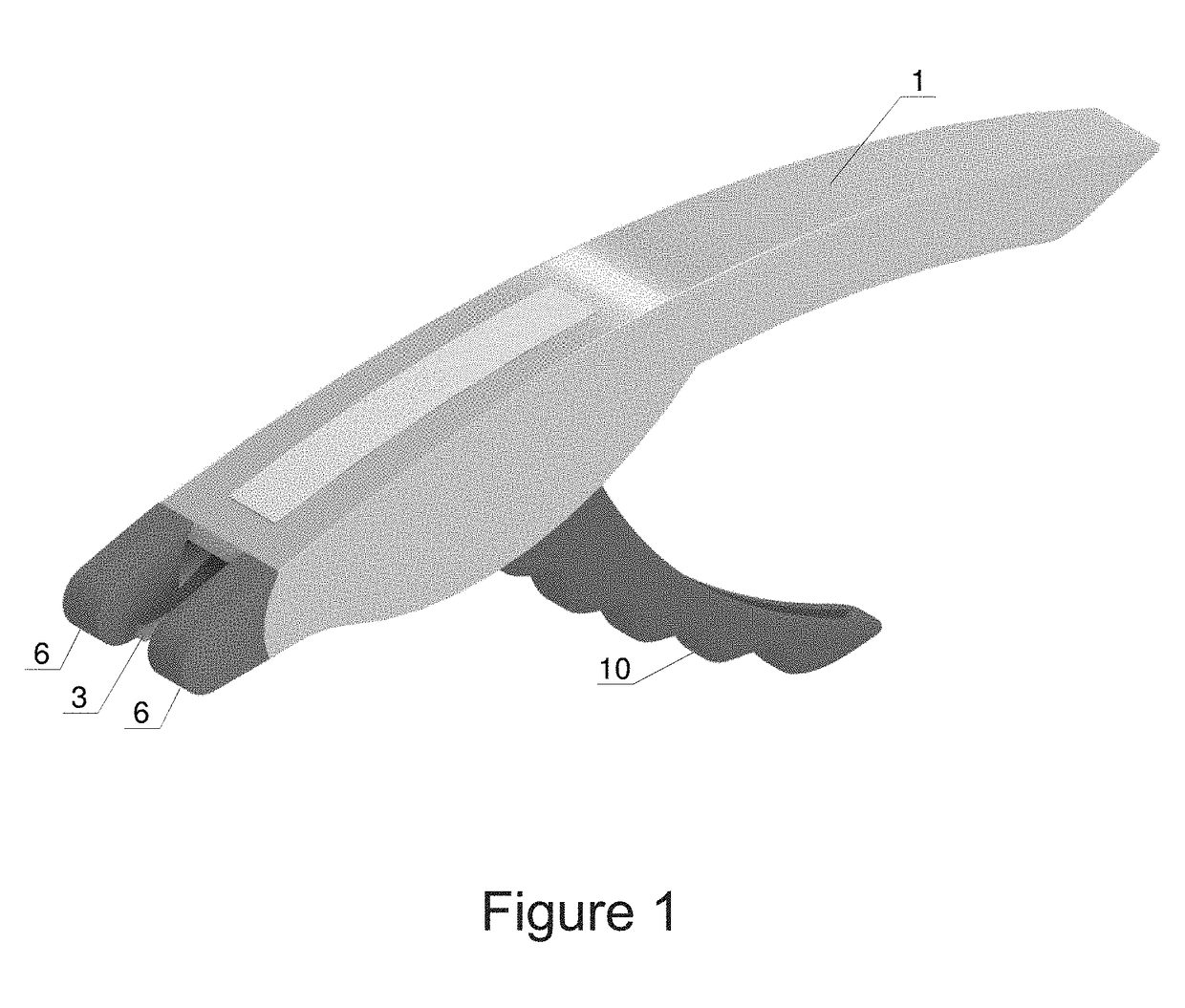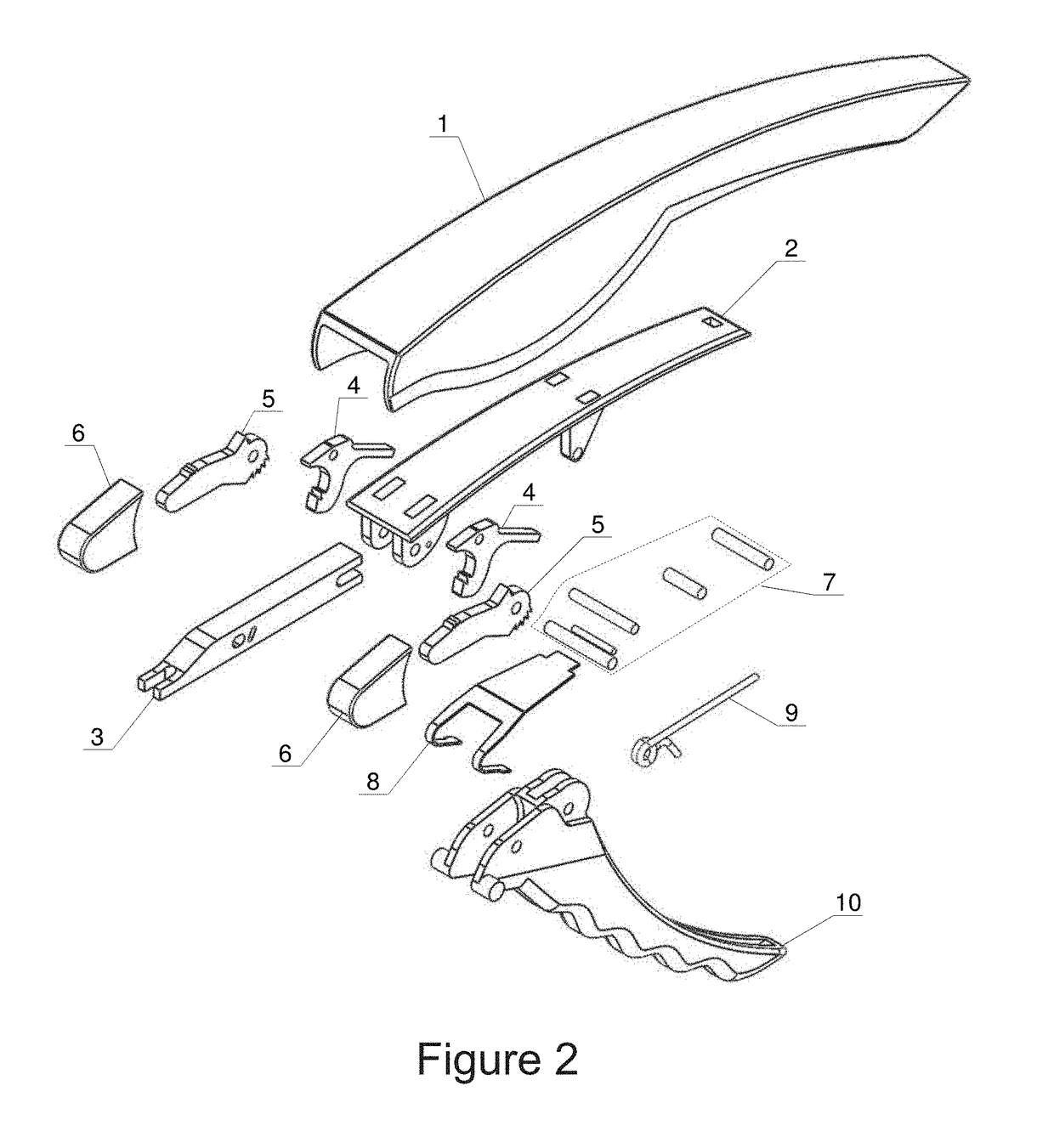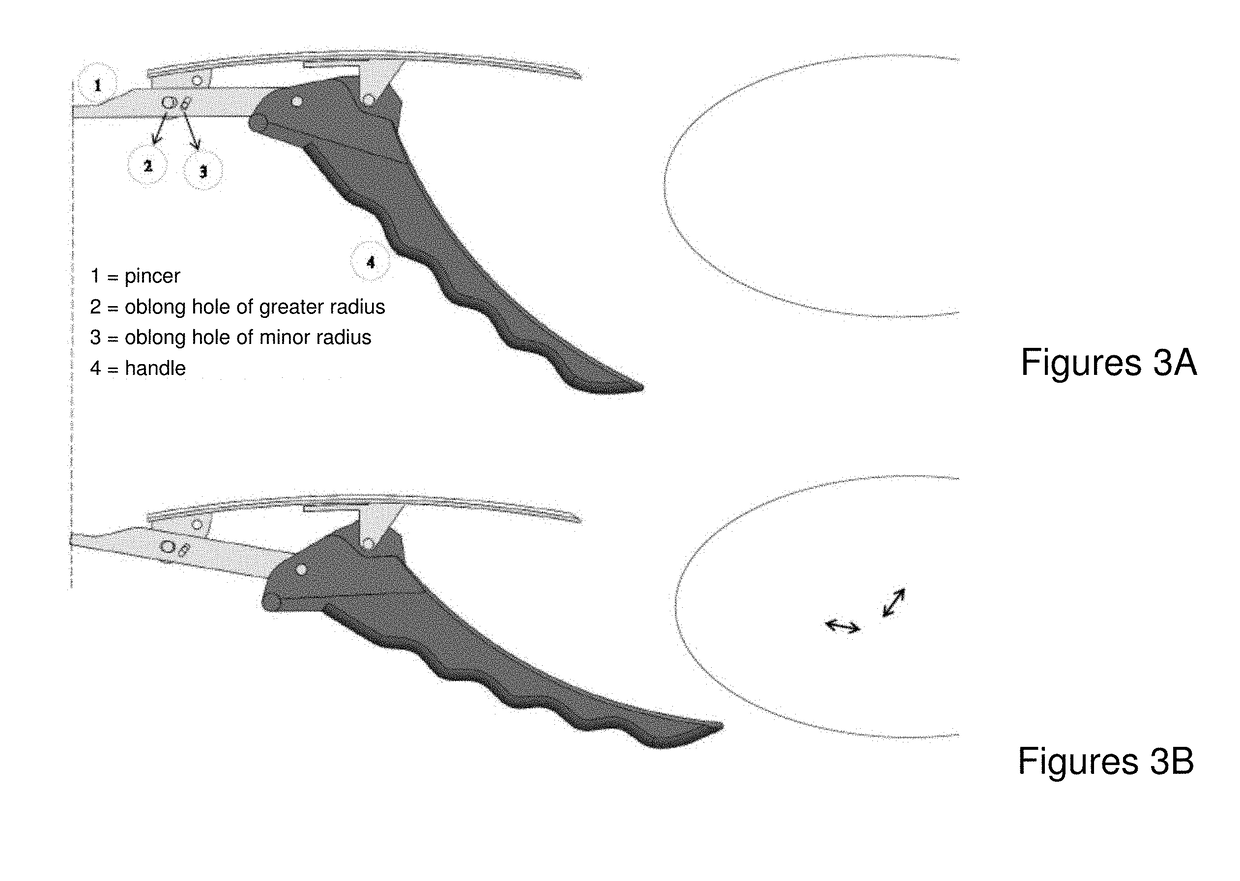Pincers for the extraction of teeth and residual dental roots
a technology of residual dental roots and pincers, which is applied in the direction of dental forceps, etc., can solve the problems of affecting the patient's comfort, and requiring a lot of effort on the user's part, so as to reduce the risk of accidents and bone fractures, reduce the manual force required, and reduce patient discomfor
- Summary
- Abstract
- Description
- Claims
- Application Information
AI Technical Summary
Benefits of technology
Problems solved by technology
Method used
Image
Examples
Embodiment Construction
[0021]With reference to the attached figures, one can note that exemplary embodiments can include a bi-socket jointed system formed by the components: handle 10, central body 2, pincer 3 and feet 5, which engage through shafts 7 on which they rotate, and are protected by a cover 1. The pincer 3 is the base part of said pincers, capable of, at one end, engaging the pulling screw previously fixed in the remaining tooth / root, where the main force component which results in the extraction of said remaining tooth / root acts. In other words, the pincer 3 can form a part of an extractor that fits over a screw that is already fixed in the tooth and / or root. Pincer 3 can then function to perform a traction movement that promotes the extraction of the tooth.
[0022]The feet 5 rest on the adjacent teeth or gum with a function of distributing the efforts on the teeth where they will effectively support the equipment and have independent adjustment and latching to ensure the support according to th...
PUM
 Login to View More
Login to View More Abstract
Description
Claims
Application Information
 Login to View More
Login to View More - R&D
- Intellectual Property
- Life Sciences
- Materials
- Tech Scout
- Unparalleled Data Quality
- Higher Quality Content
- 60% Fewer Hallucinations
Browse by: Latest US Patents, China's latest patents, Technical Efficacy Thesaurus, Application Domain, Technology Topic, Popular Technical Reports.
© 2025 PatSnap. All rights reserved.Legal|Privacy policy|Modern Slavery Act Transparency Statement|Sitemap|About US| Contact US: help@patsnap.com



